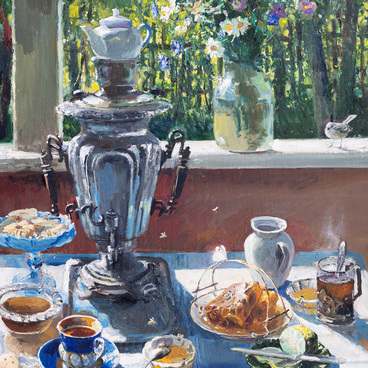Ilya Nikolaevich Zankovsky was a Russian painter and graphic artist.
In the middle of the 19th century, the attention of educated Russians was drawn to the Caucasus. The long Caucasian war, which lasted from 1817 to 1864, was nearing its end. The Caucasus was a place of exile that accommodated the majority of progressive-minded people. Many of them came out of solidarity with the exiled, others wanted to understand the difficult political situation, or were attracted by romance. “Poets and artists felt more independent in the distant Caucasus than in Saint Petersburg or Moscow…” wrote the art critic Vladimir Sadoven. Ilya Zankovsky occupied a prominent place among those painters who dedicated their art to the Caucasian historical events and the region’s distinctive nature.
Ilya Zankovsky was born in 1832 in the vicinity of Krakow. He received a military education. From 1862 to 1863, he attended the Imperial Academy of Arts in Saint Petersburg as a non-matriculated student. Then he left for the Caucasus. The Academy archives house an interesting document — a certificate issued to the future artist — which reads as follows:
In the middle of the 19th century, the attention of educated Russians was drawn to the Caucasus. The long Caucasian war, which lasted from 1817 to 1864, was nearing its end. The Caucasus was a place of exile that accommodated the majority of progressive-minded people. Many of them came out of solidarity with the exiled, others wanted to understand the difficult political situation, or were attracted by romance. “Poets and artists felt more independent in the distant Caucasus than in Saint Petersburg or Moscow…” wrote the art critic Vladimir Sadoven. Ilya Zankovsky occupied a prominent place among those painters who dedicated their art to the Caucasian historical events and the region’s distinctive nature.
Ilya Zankovsky was born in 1832 in the vicinity of Krakow. He received a military education. From 1862 to 1863, he attended the Imperial Academy of Arts in Saint Petersburg as a non-matriculated student. Then he left for the Caucasus. The Academy archives house an interesting document — a certificate issued to the future artist — which reads as follows:




